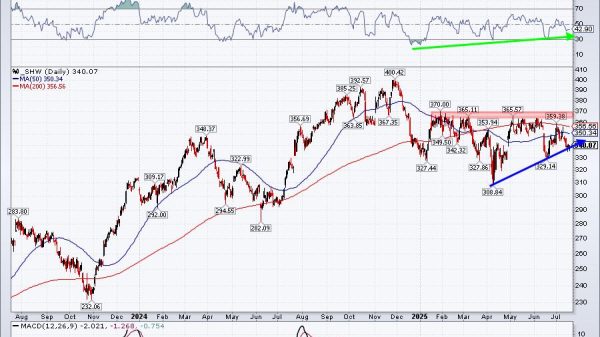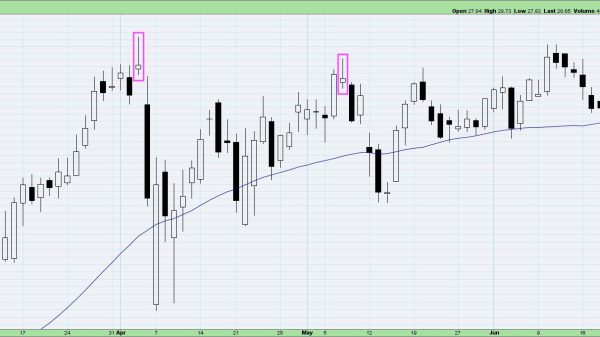Countertrend Strategy – Examples and Practical Application
The countertrend strategy is quite an interesting strategy, to say the least. It isn’t surprising that
trading against the trend requires a lot of confluence to make it work, some of which include using indicators.
To cut a long story short, the countertrend trading strategy operates on the belief that markets pass through fluctuations and corrections in spite of their overall long-term direction. Interestingly, countertrend traders consider these corrections as opportunities to enter the market and profit from temporary price reversals.
It is possible to apply this strategy to various timeframes, intermediate to short-term periods. For example, some traders might hold positions for a number of weeks, while other traders, such as day traders, may enter and exit trades within a few hours.
What does countertrend strategy have to do with trend-following strategies?
To understand countertrend trading, comparing it with trend-following strategies is helpful. On the one hand, trend followers focus on capturing the primary movement in the market, aligning their trades with the prevailing trend. Notably, trend followers take advantage of impulsive price moves that extend the trend.
On the other hand, countertrend traders thrive on corrective moves. It is worth noting that countertrend traders take positions against the prevailing trend, aiming to profit from temporary price retracements.
Countertrend traders try exploiting the dips and peaks as the market temporarily reverses its direction.
Indicators and tools
Traders who prefer countertrend strategy rely on various technical indicators and tools to spot potential reversal points:
Relative strength index (RSI): An overbought RSI indicates that a stock may be due for a correction.
Moving average convergence divergence (MACD): Divergence between price movement and the MACD indicator can signal a potential reversal.
Fibonacci retracement levels: These levels help identify potential support and resistance areas where price reversals may occur.
Candlestick patterns: Patterns like Doji, Hammer, and Shooting Star can signal potential reversals.
Risk management
Given the inherent risks of trading against the prevailing trend, countertrend traders must employ robust risk management strategies:
Stop-loss orders are essential to limit potential losses if the market continues in its original trend direction.
Position sizing: Traders should carefully determine the size of their trades based on their risk tolerance and overall portfolio size.
Diversification: Spreading investments across different assets and markets can help mitigate risk.
Principles of countertrend strategy
Notably, the core principle of the strategy mentioned earlier is the anticipation of market reversals. According to contrarian investors, market trends are often driven by emotional reactions rather than fundamental factors. When the market becomes overly bullish or bearish, contrarian investors expect a reversal.
Behavioural finance: countertrend strategies heavily rely on behavioural finance theories, which play an important role in countertrend strategies. As a reminder, behavioural finance theories study the effects of psychological factors on market behaviour. Concepts such as herd behaviour and overreaction are critical in identifying potential investment opportunities.
Risk management: Contrarian investing involves significant risks, requiring going against the grain. Without exaggeration, effective risk management strategies are essential to mitigate potential losses, including diversification, etc.
Examples
Value Investing
Value investing involves buying undervalued stocks that are out of favor with the market. In most cases, undervalued stocks are typically trading below their intrinsic value based on fundamental analysis.
Let’s give credit to people who helped to popularize value investing. Two world-famous investors, Warren Buffett and Benjamin Graham, played an important role.
Example: During the dot-com bubble in the late 1990s, the vast majority of tech stocks were grossly overvalued while traditional industries like manufacturing were neglected. Value investors who purchased undervalued traditional stocks reaped substantial gains when the bubble burst.
Contrarian fund management
Some mutual and hedge funds adopt a contrarian approach by choosing investments contrary to current market trends.
Example: The CGM Focus Fund, managed by Ken Heebner, often takes contrarian positions. For instance, during the 2008 financial crisis, the fund made significant investments in sectors that were severely depressed, such as financials and real estate, anticipating a recovery.
Sector rotation
Sector rotation involves shifting investments from overperforming sectors to underperforming ones, based on the expectation that market leadership will change.
Example: An investor might rotate out of technology stocks with a strong run-up and into utility stocks that have lagged, expecting the latter to perform better in the next market cycle.
Buying the dip
This strategy involves buying stocks or other assets after significant price declines, anticipating that they will rebound.
Example: During the COVID-19 pandemic, markets experienced sharp declines in March 2020. What happened next?
Investors who bought the dip in high-quality companies such as Apple and Microsoft benefited from the subsequent recovery and strong performance.
Everything that you need to know
It is no secret that countertrend investing often goes against human instincts. Most investors feel more comfortable following the herd, which can lead to overvaluation or undervaluation of assets.
So, contrarian investors must be psychologically prepared to endure periods of unpopularity and potential losses before their investments pay off.
Market Timing
Successful countertrend investing requires precise market timing, which is relatively easy. Investors need to distinguish between temporary market corrections and long-term trend reversals. Tools like technical analysis and market sentiment indicators can help, but there is always a level of uncertainty.
World-famous contrarian investors
It is impossible to discuss all contrarian investors. So, let’s focus on John Templeton and David Dreman.
John Templeton: Known for his contrarian approach, Templeton famously bought stocks during the Great Depression and World War II, betting on a post-war economic boom.
David Dreman: An advocate of contrarian investing, Dreman authored several books on the subject and managed funds that often took positions opposite to prevailing market sentiments.
Risk factors
High risk: Countertrend strategies can be highly risky. Betting against strong trends can result in significant losses if the anticipated reversal does not occur.
Market mispricing duration: Markets can remain irrational longer than investors can remain solvent. It’s essential to have a strong conviction and sufficient capital to endure potentially prolonged periods of adverse movements.
Case studies
The Dot-Com Bubble
The late 1990s saw a massive surge in technology stock prices, leading to the dot-com bubble. Contrarian investors like Warren Buffett avoided the tech sector, which was seen as overvalued. When the bubble burst in 2000, investors who had invested in undervalued sectors such as consumer staples saw their portfolios outperform.
The Housing Bubble
As a reminder, in the mid-2000s, the U.S. housing market experienced unprecedented growth, driven by speculative buying and lax lending standards.
Interestingly, contrarian investors identified the unsustainable nature of the housing boom and took short positions in mortgage-backed securities. When the housing market collapsed more than a decade ago in 2008, these contrarian bets paid off handsomely.
Practical tips for implementing a countertrend strategy
Base investment decisions on rigorous fundamental analysis to identify true value and mispricing in the market.
Patience and discipline: Be prepared to hold positions for extended periods and stick to your investment thesis even when the market moves against you.
Use sentiment indicators: Tools like the Fear & Greed Index, short interest ratios, and investor surveys can help gauge market sentiment and identify potential contrarian opportunities.
The importance of diversification: Spread investments across different asset classes and sectors to mitigate risk.
Stay informed: Keep up with market news, economic indicators, and changes in market conditions that could signal potential reversals.
Final thoughts
Countertrend strategies offer a unique approach to investing by capitalizing on market inefficiencies and psychological biases. While strategies mentioned earlier carry higher risks and require a strong conviction, they can lead to substantial rewards when executed correctly.
By understanding the core principles of countertrend investing, studying successful examples, and employing robust risk management practices, investors can effectively navigate and profit from market reversals.
The post Countertrend Strategy – Examples and Practical Application appeared first on FinanceBrokerage.
























